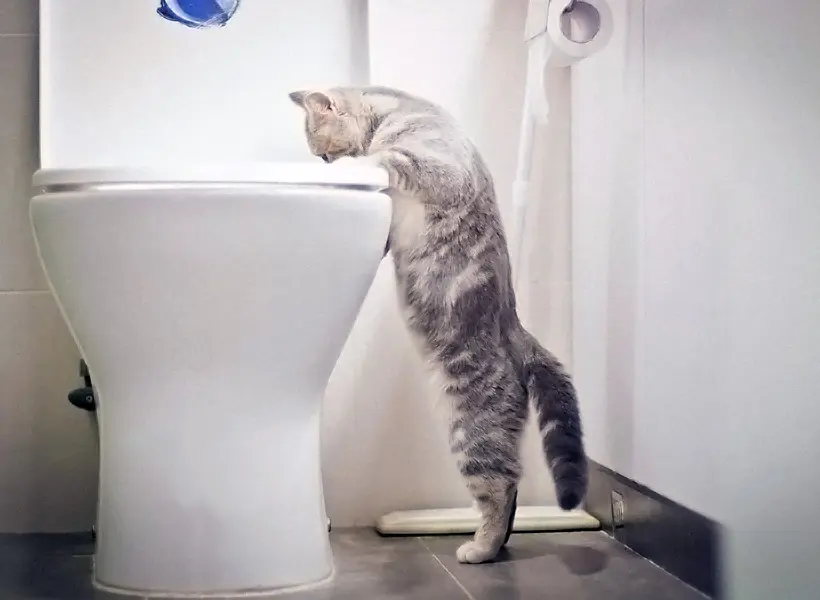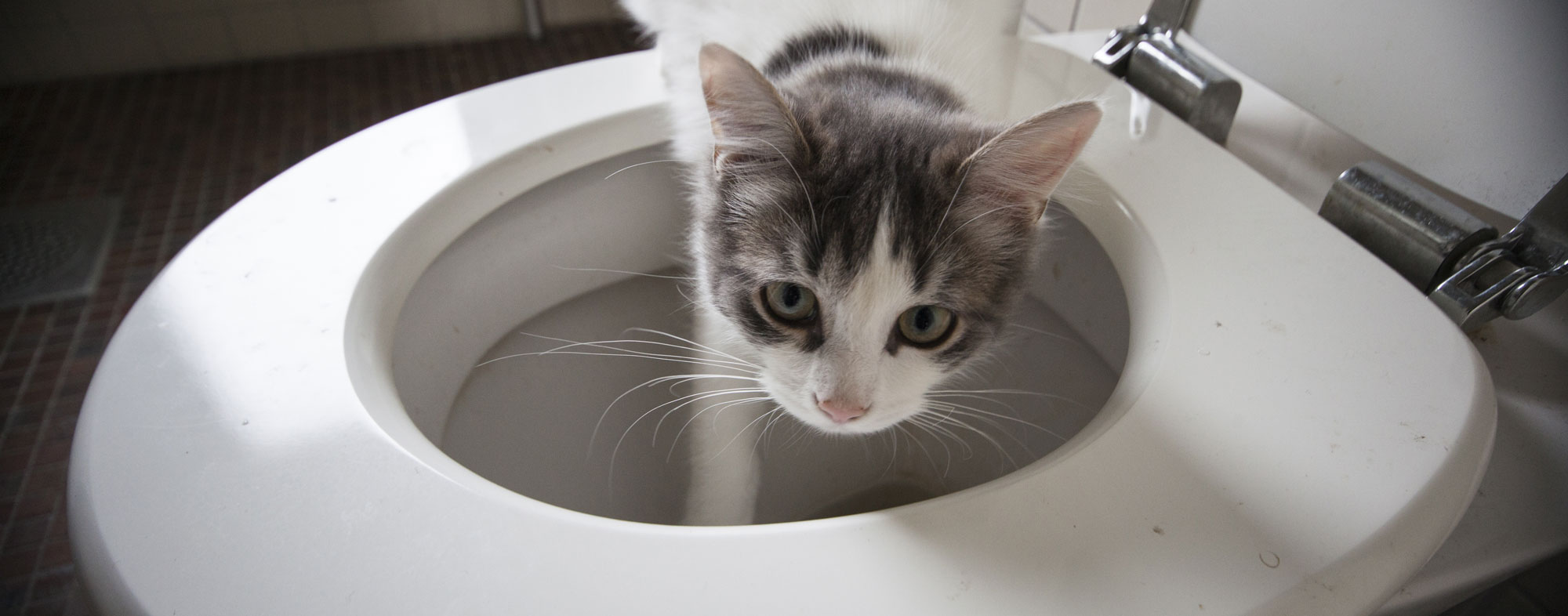How You Must Never Flush Animal Waste Down the Toilet
How You Must Never Flush Animal Waste Down the Toilet
Blog Article
Were you trying to find information and facts concerning Don't Flush Your Pets Poo Down The Loo, Vet Warns?

When it concerns getting rid of waste, especially animal waste, many individuals often turn to the convenient alternative of flushing it down the bathroom. Nevertheless, this seemingly easy solution can have major consequences for the environment and public health. In this post, we'll explore why flushing animal waste down the toilet is a bad idea and supply different techniques for appropriate disposal.
Introduction
Proper waste disposal is essential for preserving environmental sustainability and public health. While it may appear harmless to flush animal waste down the toilet, it can lead to different issues, both for the setting and human health.
Risks of flushing pet waste
Ecological influence
Flushing animal waste introduces hazardous microorganisms and pathogens into waterways, which can negatively influence marine environments. These microorganisms can pollute water resources and injury aquatic life, disrupting fragile communities.
Public health worries
Animal waste consists of damaging bacteria such as E. coli and Salmonella, which can position major health threats to people. Flushing animal waste down the commode can pollute water supplies, bring about the spread of illness and infections.
Alternatives to flushing
Instead of flushing pet waste down the toilet, there are several different disposal techniques that are more environmentally friendly and hygienic.
Composting
Composting animal waste is an eco-friendly method to get rid of it. By composting, raw material is broken down into nutrient-rich soil, which can be utilized to fertilize gardens and plants.
Landfill disposal
Disposing of pet waste in a land fill is an additional option. While not as environmentally friendly as composting, it is a more secure option to flushing, as it prevents the contamination of water sources.
Pet waste disposal systems
There are specialized pet garbage disposal systems available that securely and hygienically get rid of animal waste. These systems commonly utilize enzymes to break down waste and eliminate smells.
Steps to correct animal garbage disposal
To make sure proper disposal of pet waste, adhere to these steps:
Scooping and landing waste
Routinely scoop and bag animal waste utilizing biodegradable bags. This protects against waste from contaminating the atmosphere.
Utilizing assigned waste bins
Dispose of bagged animal waste in assigned waste bins, such as garden compost containers or land fill bins. Stay clear of flushing it down the bathroom in any way costs.
Cleaning up can and animal areas regularly
On a regular basis tidy can and pet dog locations to avoid the build-up of waste and microorganisms. Use pet-safe cleaning items to preserve health.
Advantages of appropriate disposal approaches
Adopting appropriate disposal methods for animal waste uses several benefits:
Lowered environmental pollution
Proper disposal techniques lower the risk of environmental pollution, shielding rivers and communities from contamination
Lessened threat of water contamination.
By staying clear of flushing pet waste down the commode, the danger of water contamination is significantly decreased, guarding public health.
Boosted cleanliness and health
Appropriate disposal techniques advertise much better sanitation and hygiene, creating a safer atmosphere for both people and animals.
Verdict
To conclude, flushing animal waste down the bathroom is damaging to the setting and public health. By embracing alternative disposal approaches and following appropriate waste administration methods, we can decrease the negative influence of animal waste and add to a cleaner, healthier world.
What To Do With Dog Poo – The Do's And Don'ts Of Disposing Of Faeces
Dog poo bins
Some councils provide dedicated dog waste bins in popular dog-walking areas that can take dog poo that has been bagged but you can legally dispose of dog waste in any public litter bin, as long as it is securely bagged. This also applies to your wheelie bin at home.
Do not flush
Water companies do not recommend flushing dog faeces down the toilet because certain parasites can survive the water processing treatment and are potentially harmful to humans. You should also never consider flushing dog poo that has been bagged down the toilet as the bags will not break down and instead create severe blockages in the sewage system.
In the woods
The Forestry Commission promotes a ‘stick and flick’ method for dealing with waste in the woods. This means finding a stick and using it to flick any poo from off the path so that it is out of the way of other walkers. You could also bury it as long as it is not in an area where there might be livestock.
Livestock
Parasites found in dog poo can be transmitted to livestock if they inadvertently eat infected faeces that has been left on grazing land. This could result in the death of sheep or abortion in cattle so you should always make sure you pick up your dog’s waste in fields where livestock could be present.

On a regular basis tidy can and pet dog locations to avoid the build-up of waste and microorganisms. Use pet-safe cleaning items to preserve health.
Advantages of appropriate disposal approaches
Adopting appropriate disposal methods for animal waste uses several benefits:
Lowered environmental pollution
Proper disposal techniques lower the risk of environmental pollution, shielding rivers and communities from contamination
Lessened threat of water contamination.
By staying clear of flushing pet waste down the commode, the danger of water contamination is significantly decreased, guarding public health.
Boosted cleanliness and health
Appropriate disposal techniques advertise much better sanitation and hygiene, creating a safer atmosphere for both people and animals.
Verdict
To conclude, flushing animal waste down the bathroom is damaging to the setting and public health. By embracing alternative disposal approaches and following appropriate waste administration methods, we can decrease the negative influence of animal waste and add to a cleaner, healthier world.
What To Do With Dog Poo – The Do's And Don'ts Of Disposing Of Faeces
Dog poo bins
Some councils provide dedicated dog waste bins in popular dog-walking areas that can take dog poo that has been bagged but you can legally dispose of dog waste in any public litter bin, as long as it is securely bagged. This also applies to your wheelie bin at home.
Do not flush
Water companies do not recommend flushing dog faeces down the toilet because certain parasites can survive the water processing treatment and are potentially harmful to humans. You should also never consider flushing dog poo that has been bagged down the toilet as the bags will not break down and instead create severe blockages in the sewage system.
In the woods
The Forestry Commission promotes a ‘stick and flick’ method for dealing with waste in the woods. This means finding a stick and using it to flick any poo from off the path so that it is out of the way of other walkers. You could also bury it as long as it is not in an area where there might be livestock.
Livestock
Parasites found in dog poo can be transmitted to livestock if they inadvertently eat infected faeces that has been left on grazing land. This could result in the death of sheep or abortion in cattle so you should always make sure you pick up your dog’s waste in fields where livestock could be present.

I am very intrigued by Don't Flush Your Pets Poo Down The Loo, Vet Warns and I am assuming you liked the entire blog entry. Do you know another person who is fascinated by Should you flush animal waste down the toilet? Do not hesitate to promote it. I cherish reading our article about Why you should never flush dog poop down the toilet.
Schedule Services Report this page